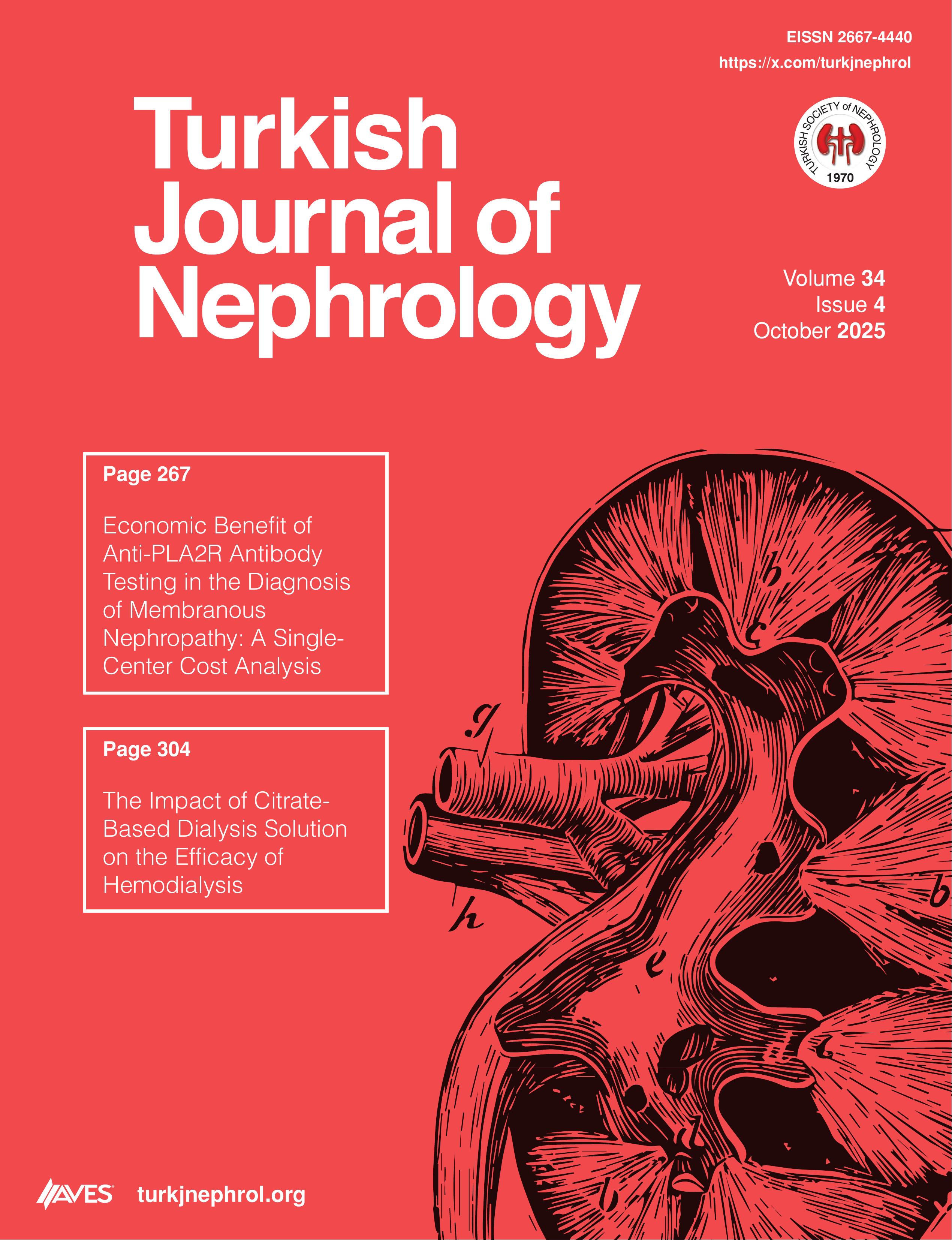Objective: The current study focused on the possible effects of citrate-containing acidic dialysis solutions on laboratory parameters and dialysis adequacy.
Methods: Only patients who were undergoing chronic hemodialysis (HD) were enrolled and analyzed. The HD treatment was defined as 3 times per week, with each dialysis session lasting 4 hours. Only the arteriovenous fistula was preferred for vascular access. Dialysis sessions were performed with citrate-containing acidic dialysis solutions for 3 months. Afterward, the outcomes of this period were compared with the prior 3-month period using a standard acetate-containing acidic dialysis solution.
Results: In this study, 80 patients were analyzed. The average Kt/V urea value was 1.47 (1.35-1.80) during the HD with acetate-containing acidic dialysis solution, whereas it was 1.57 (1.38-1.80) during HD with citrate-containing acidic dialysis solution (P = .003). The average urea reduction ratio was 72.1 ± 5.7 during the HD with acetate-containing acidic dialysis solution, while it was 73.5 ± 5.6 during the HD with citrate-containing acidic dialysis solution (P = .015). Lower total serum calcium levels were determined during the citrate-containing acidic dialysis solution period (P < .001). A significant decrease was observed in clotting events during the citrate-containing acidic dialysis solution period (P = .026).
Conclusion: Outcomes underscore that dialysis efficiency could be augmented by using citrate-containing acidic dialysis solution.
Cite this article as: Erer K, Uysal C, Oymak O. The impact of citrate-based dialysis solution on the efficacy of hemodialysis. Turk J Nephrol. 2025;34(4):304-310.

.png)

.png)

.png)
